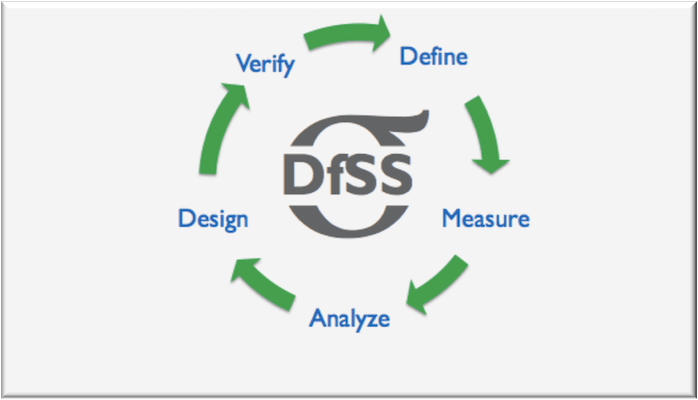Five Steps Guaranteed to Increase B2B Sales Revenue and Margins
So, how is your company’s sales process working? Responses to that question often paint an ugly picture:
- “We just don’t have the discipline to make a sales process work.”
- “We put it in place but the people just don’t follow it. They like to do their own thing.”
- “We have trouble because our sales managers don’t have time to coach their people properly.”
- “We are good at determining the sales process, but people insist on doing it their own way.”
If these sound familiar, you might believe that “Salespeople are just allergic to process thinking,” or, “Most salespeople got into sales to get away from having to be analytical disciplined. That’s just the way it is.”
Hogwash.
In my experience, the best salespeople are no more allergic to process than anyone else. What they are allergic to is bad management.
What is bad management?
<more>
Bad management is the biggest problem in sales and marketing. It relies on the Usual Fixes and the Numbers Game. It ignores what goes on between employee’s ears, and fails to explicitly develop your employee’s abilities to think and judge for themselves.
If you want to influence employees (much less customers), you must discover the reasons which engage and persuade them. In “How Do You Map a Sales Process” I provided an overview of the essential approach. Further, Deming’s principles are essential to engaging and leading sales and marketing teams to improve.
Here, I’ll start with a military analogy to illustrate how the sales process fits into the sales production system. With that established, I’ll explain why management can only accomplish its mission if it incorporates an explicit method for improving.
“No Battle Plan Survives Contact with the Enemy”- Helmuth von Moltke
Sales and marketing operations often resemble “the fog of war.” Situation awareness with customers is uncertain. The larger the organization, the more isolated its executives are from “the facts on the ground”. The first Iraq war provides an interesting story about the impact of technology on this challenge. It was the first time, mobile technology communicated journalist’s observations in near real time. Strikingly, each correspondent’s view was quite unique. Their perspectives were circumscribed, like the view inside a soda straw. As their stories unfolded on the nightly news, a more comprehensive mosaic was created for the television audience.
Sales teams are a lot like those correspondents, especially if they are geographically disbursed. Sales teams live and breathe their own stories, which means their view is circumscribed by their context.* Like journalists, they need a respectful agreement among themselves – a process – defining the best way of doing the work.
And just like the television audience, the companies they work for need a way of seeing the context, the whole sales production system. Ultimately, companies who can assemble a valid mosaic of what is working and what isn’t in the field (and why) can create plans that have a much better chance of surviving contact with real customers.
That’s because their perspective identifies the common, high-impact issues which, if improved, will elevate the performance of the entire enterprise.
Five Steps to Increase B2B Sales Revenue and Margins
Such a sales production system can continuously improve its effectiveness with customers. However, it can’t be built all at once. Building it requires a sustained effort that requires your team to actively improve how they think. The good news is that each step generates observable, if incremental, improvement over what came before.
- Step One: Engage the Sales Team
Most companies fail, because they don’t know how to properly diagnose what is going right and wrong in their sales production system. Sales teams need help integrating each other’s direct experiences into a common perspective of what is working, what isn’t. That enables them to learn why change is needed, and what success will look like.
Engaging the team builds a consensus. It uncovers hidden obstacles to improvement, such as misaligned compensation, performance measurements, or workloads. These can be profoundly important discoveries. They prove the active, reasoning minds of your people can reveal obstacles the management system had previously ignored. Making the changes sands an unmistakable signal. It proves to everyone that you are serious.
- Step Two: Define the Value Stream
With internal alignments underway, sales teams can jump to the business of selling more customers. This requires segmenting and prioritizing customers and prospects into actionable classes, researching Voice of Customer information, mapping customer value, and defining their customer’s journey.
Again, each of these is a huge accomplishment. It clears the air and helps the sales team recognize which part of the process must be improved first.
For example, some sales teams have realized they’ve been wasting samples or demonstrations on prospects who were unlikely to buy. Others have learned it is necessary to test the business fit early in their sales cycle by reaching and presenting to senior level executives in the prospect’s organization. This avoids having to respond (for years in some cases) to requests for information and demonstrations from lower level people who might be interested, and have no power to buy.
- Step Three: Establish Standards
Completing the research enables your team to create reality-based standards and measurements determine if value has been added (or not). These operational definitions are required for any sales and marketing team to function properly. They enable the sales team to prioritize prospects and customers who are more or less likely to buy, and therefore to produce a much more realistic forecast.
Such work stabilizes the team, and the data it can generate. It identifies the observable characteristics required to measure both the quantity and quality of deal flow.
For example, a medical devices manufacturer and a software company both achieved forecast accuracy of more than 95%. A water filtration company figured out how to systematically grow its dealer network. An electronic distributor increased is close ratio by ensuring its precious engineering resources were applied only to the highest quality sales opportunities.
- Step Four: Establish Standardized Work
The standards and measurements for the work are not the same as standardized work. They are baselines which enable the team to develop respectful agreement, a routine that can be followed, to move a prospect along and to discern normal from abnormal, and whether value was added.
For example, if the team has a standard for knowledge of the customer that can be gained, and how to gauge their responsiveness and participation, they can establish a consistent method for conducting initial meetings with prospects, for assessing the quality of sales opportunities, or for presenting the value of a relationship or proposal. The standards enable the team to detect how much value was added.
This is crucial, because it is what enables the final, and most important factor that improves revenues and margins.
- Step Five: Initiate a Method for Improving (kaizen)
Even in rudimentary sales environments, standards enable salespeople to readily see what a good job looks like, and where improvement is possible. In fact, you will have very limited success implementing a sales process unless you also institute some kind of suggestion system (whether or not labeled formally as a “suggestion system”) that gives individuals doing the standardized work a way to make suggestions in how to improve the work – also known as “kaizen”.
The essence of kaizen comes down to the people who do the work making suggestions in how to improve it.
- Attempting to implement standardized work without a method for improving kills employee’s motivation. Their creativity is wasted. The problems they encounter again and again go unidentified, unsolved, and unabated. Employees don’t take initiative, and improvement stops. Sales operations – like economies, like companies, like cultures, like species – either progress or decline.
- On the other hand, attempts to improve without standardized work are also doomed to fail. Without the footing provided by a baseline of measurements and practices, change is chaotic. Progress becomes debatable, regress inevitable. A saw-tooth pattern performance develops. Problems repeat, and since PDSA is not followed, no root cause analysis is possible. Improvement stops.
Here are some examples: After applying operationally-defined qualification criteria for several months, the medical devices manufacturer above realized some of the criteria were misleading to the clinically oriented salespeople.** When the questions were improved, forecast accuracy went up even further.
Later, the same company realized the value propositions required to sell to their traditional, well-funded teaching hospital customers were quite different from those required to sell to inner city hospitals. Again, the qualification criteria and parts of the sales process needed to change.
Implementing such improvements is incredibly cathartic to the sales organization. They are visible manifestations that the company supports their cause. This stimulates enthusiasm and strengthens participation.
Don’t Let “Best Practices” Prevent Improvement
Standardized work is not the same as commonization, which means simply that certain work is done the same way everywhere in the company. For example, commonization is when expense reports or price quotations are accomplished in a way that ensures those jobs are done in exactly the same way in every location by every worker is commonization (through software).
Many companies are concerned that salespeople in New York will do things somewhat differently than salespeople in Dallas, or Singapore, or Dusseldorf. They allow this concern to become an excuse to not turn their employees loose with kaizen, to not give them the responsibility of making suggestions to improve their own work. They worry instead about keeping track of and communicating “best practices.”
There are of many occasions when commonization is desirable. However, the real prize is the establishment of standardized work, a baseline of operation that enables everyone to do the job in a way that can be observed for correctness, where abnormalities can be easily identified, and improvements readily generated. With standardized work as a baseline, a foundation for PDSA is established.
Create a Thriving Company
As a leader, if you can achieve PDSA in your operations, you should be very happy. When people are engaged in pursuing improvements in their own standardized work, your dissatisfaction that different workers may do similar jobs a little differently will be much less of a concern. That’s because the data and evidence generated by your sales production system will focus your attention on those common, high-impact issues which have a more strategic impact on your firm’s success.
You will also find that bringing these employees together to share what they have learned is a source of incredible insights and opportunities for further improvement. It is a competitive advantage that cannot help but increase your company’s revenue and margins.
Note: Portions of this article were inspired by John Shook’s three-part article titled, “Five Missing Pieces in Your Standardized Work”
*I referred to this as the “Tribal Knowledge” stage in Sales Process Excellence, pg 279.
** I wrote about this in Chapter 3 of Sales Process Excellence, pgs 55-64.
By Michael Webb
 More than twelve years ago, with deep experience in field sales, sales management, and sales training, Michael Webb set out to create a data-driven, process-based alternative to the offerings of typical sales training, sales consulting, and CRM companies. Since 2002, he has published numerous articles demonstrating how B2B sales organizations can increase productivity, predictability, and margins using the rational methods of the quality and productivity sciences (Six Sigma, Lean, Shingo, etc.).
More than twelve years ago, with deep experience in field sales, sales management, and sales training, Michael Webb set out to create a data-driven, process-based alternative to the offerings of typical sales training, sales consulting, and CRM companies. Since 2002, he has published numerous articles demonstrating how B2B sales organizations can increase productivity, predictability, and margins using the rational methods of the quality and productivity sciences (Six Sigma, Lean, Shingo, etc.).
In 2004, he helped organize the first conferences ever held on applying Six Sigma to marketing and sales, and delivered the keynote speeches. He has published two thought leading books:
- Sales and Marketing the Six Sigma Way (Kaplan, 2006, 4.3 stars on Amazon)
- Sales Process Excellence < https://m415.isrefer.com/go/SPE/OES/ > (privately published, 2014, winner of the Shingo Research Award)
Michael and his team have helped companies such as Burr Oak Tool, Danfoss, Wacker, Tyco, and Pentair, as well as many smaller B2B companies to accelerate deal flow, improve forecast accuracy, and double sales productivity. His website www.salesperformance.com < https://m415.isrefer.com/go/SPCHomeOES/OES/ > contains a wealth of free resources and information on sales process improvement.





